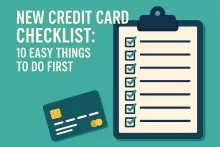The Future of Credit Card Loyalty Programs in a Cashless Society

As the world becomes more digital and cashless, credit card loyalty programs are going through a significant transformation. With over 70% of consumers choosing digital payment methods, it’s clear that the future of spending is shifting away from physical cash. This change is also affecting how we engage with credit cards and their reward systems. Traditional loyalty programs that once focused on points, cashback, or miles are now adapting to keep up with changing technology, consumer behavior, and societal values.
In a cashless society, credit card loyalty programs will need to focus on providing more personalized experiences, seamless integration with digital platforms, and an increased focus on sustainability. Let’s explore how these trends are shaping the future of loyalty programs.
1. Personalization Is Key
As consumers become more accustomed to personalized experiences, loyalty programs are also shifting to cater to individual needs. Instead of offering generic rewards to all customers, credit card companies are now using data analytics and advanced algorithms to tailor rewards based on your spending habits. For instance, if you frequently dine out or travel, you might receive higher cashback offers in those categories.
This move toward personalized rewards is not just about offering what’s useful to you, but also increasing engagement. Studies show that personalized offers can boost customer loyalty by up to 20%, meaning credit card companies that embrace this trend are more likely to keep their customers happy. In the future, as machine learning technology improves, credit card issuers will be able to predict your spending patterns and offer rewards before you even realize you want them. This level of personalization ensures that your loyalty is rewarded in a way that feels meaningful and aligned with your lifestyle.
2. Mobile Wallet Integration: A Seamless Experience
Mobile wallets like Apple Pay, Google Pay, and Samsung Pay have already made paying for goods and services easier than ever. Last year alone, the use of mobile wallets grew by 50%. As this technology becomes more widely adopted, credit card companies are integrating their loyalty programs into these mobile platforms. This means you can earn and redeem rewards directly through your mobile wallet without needing separate loyalty cards or apps.
For example, you can pay for your groceries using your mobile wallet, and loyalty points are automatically credited to your account. This eliminates the need to manually scan loyalty cards or enter reward codes, creating a smoother, more convenient experience for users. As mobile wallets evolve, we could see even more options to redeem rewards within these platforms, whether it’s for discounts on purchases, access to special deals, or gifting points to others.
3. Fintech and Embedded Loyalty Programs
Fintech innovations are pushing the boundaries of what’s possible with credit card loyalty programs. Many financial services are now embedding loyalty programs directly into everyday apps, such as budgeting tools, ride-sharing apps, or even food delivery services. This means you can earn rewards just by using the apps you already interact with regularly.
For example, the Starbucks app allows customers to earn loyalty points with every purchase they make. Soon, even more businesses could adopt this model, making it easy to earn rewards wherever you shop or spend. Fintech is making loyalty programs more accessible and integrated, reducing the friction that often comes with using separate loyalty platforms.
4. Experiential Rewards Over Cash Back
More and more, consumers are valuing experiences over material goods. Instead of only earning cashback or points, many are now looking for exclusive experiences that can enhance their lifestyle. Credit card companies are recognizing this shift and offering experiential rewards, such as VIP access to concerts, private events, or luxury travel perks.
American Express, for example, has been a leader in this area, offering exclusive access to entertainment and events to their cardholders. This shift is part of a broader trend where loyalty programs are moving away from transactional rewards (like cashback) and toward creating memorable experiences that make the consumer feel valued.
5. Sustainability and Ethical Loyalty Programs
Consumers today are more eco-conscious and value-driven than ever before. They care about how their purchases impact the planet and society. In response, credit card companies are beginning to align their loyalty programs with sustainability and ethical practices. Some companies are now offering bonus rewards for spending at eco-friendly or socially responsible businesses.
Additionally, some credit cards allow customers to donate their loyalty points to charitable causes or convert them into environmentally friendly rewards. Studies show that 70% of consumers prefer brands that are involved in social responsibility, meaning that loyalty programs focusing on sustainability can help build deeper, more lasting customer relationships.
6. Cryptocurrency and Blockchain: The Future of Rewards
While still in its infancy, cryptocurrency is becoming an increasingly important part of the financial landscape, and credit card loyalty programs are starting to explore its potential. Some companies are already testing the waters by offering loyalty rewards in the form of digital currencies. For instance, certain airlines are looking at the possibility of offering miles as cryptocurrency, allowing customers to convert their miles into digital assets or use blockchain-based systems for greater transparency and flexibility.
As cryptocurrency continues to gain mainstream adoption, it’s likely that credit card loyalty programs will evolve to incorporate digital currencies, allowing customers to earn and redeem rewards in new ways. This could open up exciting possibilities for international rewards, giving consumers more flexibility in how they use their loyalty points, especially when traveling or shopping across borders.
7. AI and Automation: Enhancing the Customer Experience
The future of credit card loyalty programs will also be shaped by artificial intelligence (AI) and automation. With the help of AI, credit card companies can analyze spending habits and deliver rewards that feel more intuitive and personalized. For instance, AI can predict when you might want to make a specific purchase and send you a reward offer just in time.
Automation will also streamline the entire rewards process, reducing the need for manual input. In the future, we may see AI-powered chatbots or virtual assistants that help you manage your rewards, suggest how to maximize them, and even remind you when you're close to earning a specific reward. This makes the experience more efficient and user-friendly, allowing customers to get the most out of their loyalty programs with minimal effort.
Conclusion: A Bright Future for Loyalty Programs
As we continue moving toward a cashless society, credit card loyalty programs will become increasingly sophisticated and consumer centric. The future will see a greater focus on personalization, seamless integration with digital platforms, and rewards that align with consumers’ values, whether that’s experiential perks or environmentally friendly choices.
For credit card companies, staying competitive will mean embracing these changes and adapting their loyalty programs to meet the expectations of a modern, mobile-first, and socially conscious consumer base. For consumers, these changes will mean more ways to be rewarded for their spending, whether it’s through personalized cashback, exclusive experiences, or even cryptocurrency rewards.
In a world that’s becoming more digital, connected, and conscious, the future of credit card loyalty programs is bright, offering more value, convenience, and opportunities than ever before.




Leave a Reply